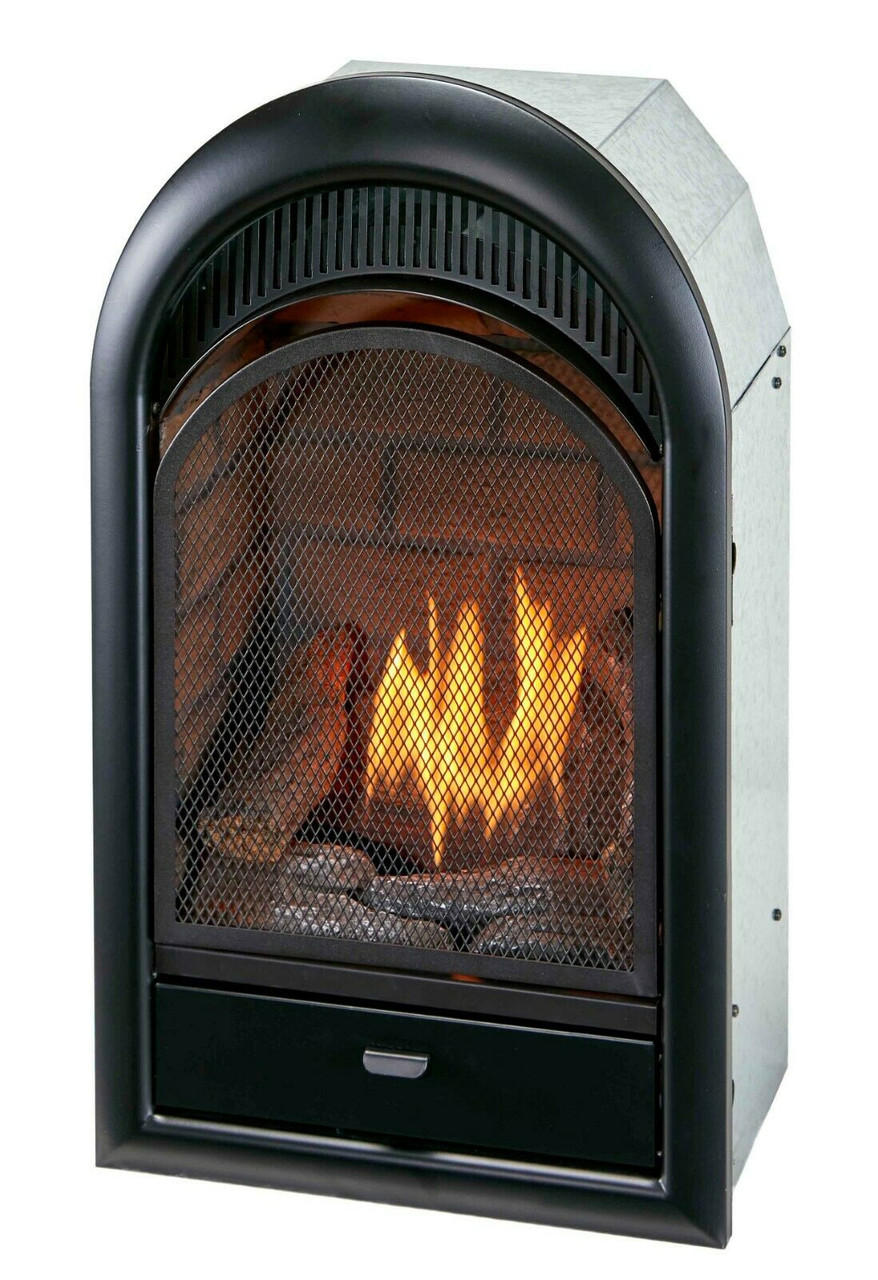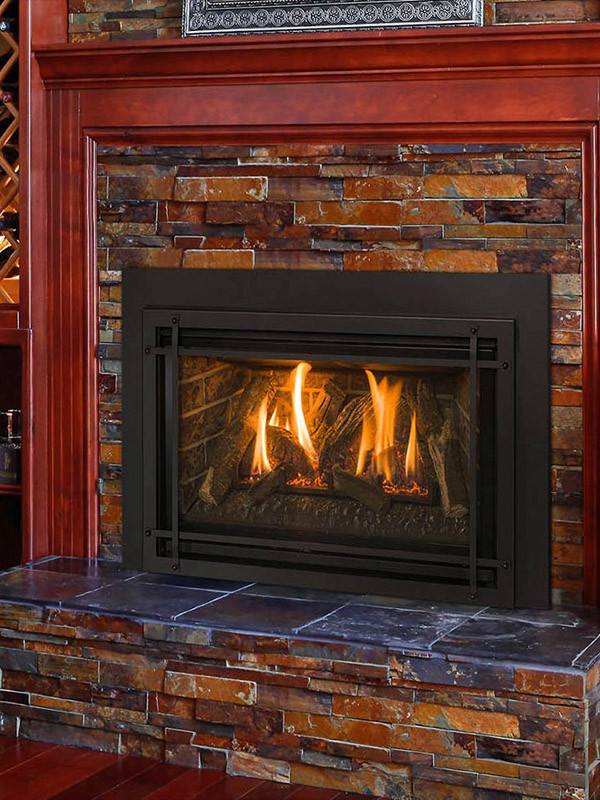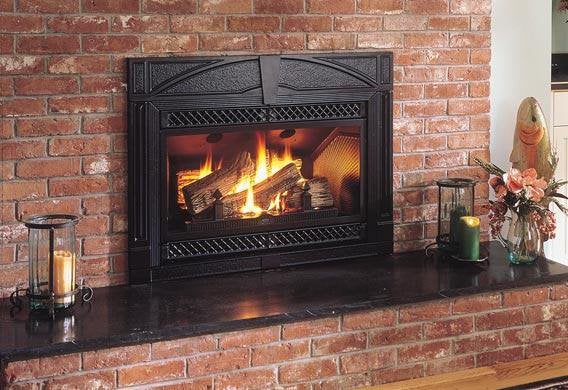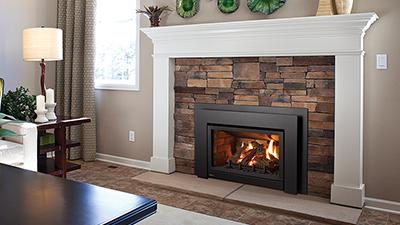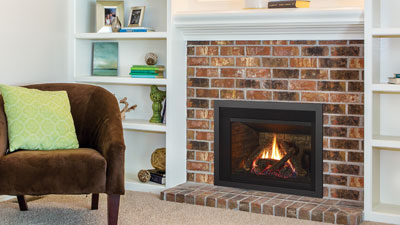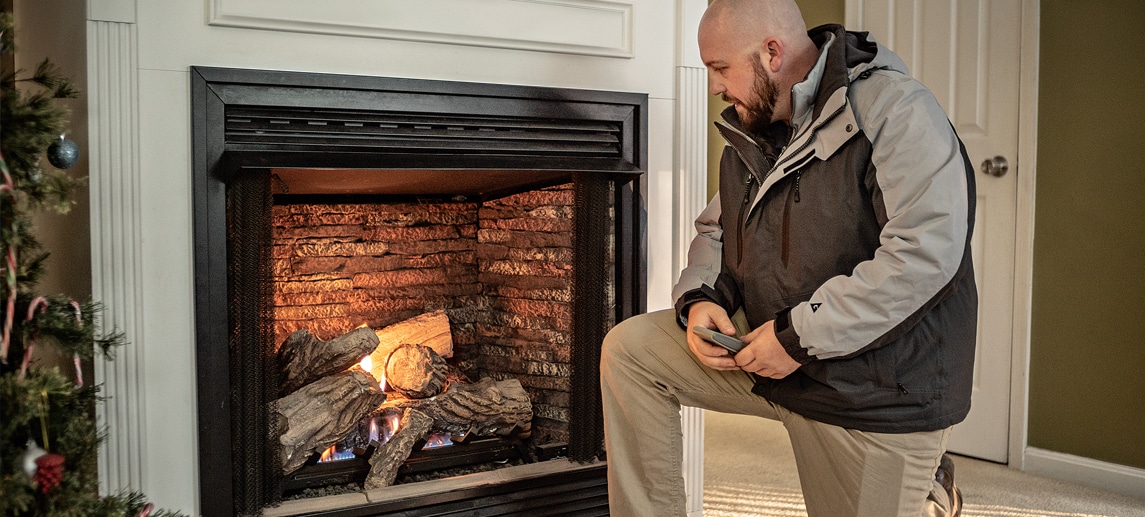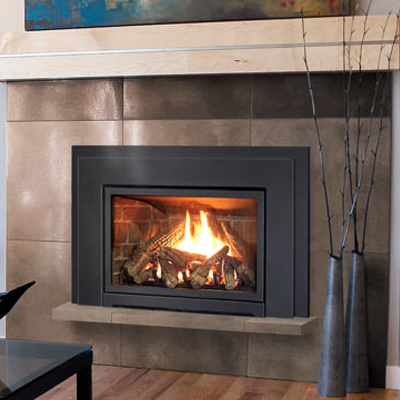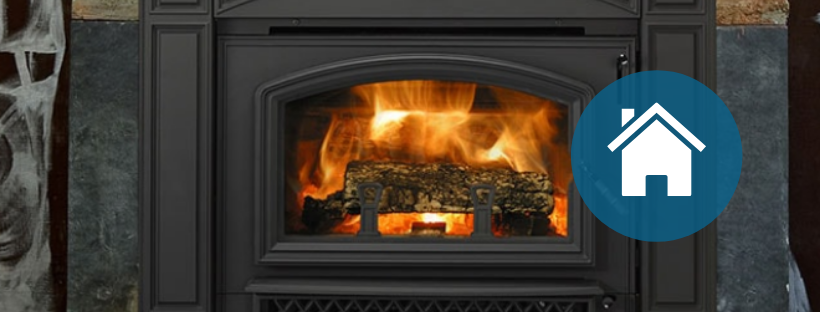When I converted my wood-burning fireplace to propane, I was amazed by the convenience and efficiency a propane heater insert could provide. No more chopping wood, hauling logs, or cleaning up ashes – just instant warmth at the push of a button. After using my propane insert for two winters, I’ve discovered both its advantages and limitations compared to traditional fireplaces. These inserts transform underutilized fireplaces into powerful heat sources that combine the ambiance of flames with modern heating technology. Here’s what I learned about selecting, installing, and living with a propane fireplace insert that could help you decide if it’s right for your home.
How Propane Fireplace Inserts Work
Propane fireplace inserts are self-contained heating units designed to fit inside existing masonry fireplaces. They burn propane gas to produce realistic-looking flames while efficiently heating your living space. My model uses a vented system that exhausts combustion gases outside through the existing chimney, making it safer than unvented options. The insert includes ceramic logs arranged over burners that create surprisingly authentic flame patterns. A glass front contains the flames while allowing clear viewing from multiple angles in the room.
The heating mechanism impressed me most. A built-in blower circulates warm air into the room while the firebox radiates heat directly. My insert can produce up to 30,000 BTUs – enough to heat my 500-square-foot living room comfortably. The thermostat control maintains consistent temperatures automatically, unlike my old wood fireplace, which required constant attention. I can adjust flame height and heat output independently, enjoying the visual appeal without overheating the space.
Propane inserts require a gas line connection, which was new to my traditionally wood-burning home. A licensed technician ran a dedicated propane line from my exterior tank to the fireplace location. The installation included safety features like an oxygen depletion sensor and an automatic shut-off valve. Understanding these components helped me feel confident about using gas safely indoors. While different from wood fires, the propane system offers reliability I’ve come to appreciate during cold snaps.
Energy Efficiency and Heating Performance
The efficiency gains from switching to propane were immediately noticeable. Where my old fireplace lost most heat up the chimney, the insert directs nearly 80% of its energy into the room. My propane bills increased slightly, but I saved significantly on wood costs and reduced my overall heating expenses. The sealed combustion system doesn’t pull warm indoor air up the flue like traditional fireplaces do. I’ve calculated that the insert heats my living space for about half the cost of running electric space heaters.
Temperature control is where propane inserts shine. I can set my thermostat to maintain the perfect comfort level without constant adjustments. The blower distributes heat evenly throughout the room instead of creating hot and cold zones. When I want just the ambiance without heat, I can operate the flames independently – a nice feature during milder weather. The instant on/off capability means no waiting for fires to build or embers to die down like with wood.
There are some limitations to consider. The heat output, while substantial, won’t replace a whole-house heating system in colder climates. My insert works best as a zone heater for the room it’s in. The blower, while effective, does create some noise at higher settings that might bother light sleepers if used in bedrooms. Proper sizing is crucial – an undersized unit will run constantly trying to heat a large space, while an oversized one may short-cycle. My installer helped select the right BTU rating for my square footage and insulation quality.

Installation Requirements and Process
Installing a propane fireplace insert isn’t a typical DIY project due to gas line and venting requirements. I hired a certified technician who first assessed my existing fireplace’s suitability. They confirmed my chimney could properly vent the combustion gases and checked clearances to combustible materials. The installation required running a gas line from my propane tank to the fireplace location, including a shut-off valve at the unit.
The physical installation took about six hours. The crew removed my old damper and installed a flexible stainless steel liner in the chimney for proper venting. They positioned the heavy insert carefully, ensuring it was level and securely placed. Final connections included wiring the thermostat, testing gas pressures, and verifying that all safety systems worked correctly. The technician also walked me through the operation procedures and maintenance requirements before considering the job complete.
Post-installation inspections are equally important. My installer recommended an annual check-up to inspect the venting system, test safety devices, and clean critical components. They also showed me how to check for gas leaks using a soapy water solution. While the professional installation added to the upfront cost, the safety assurances and warranty protections made it worthwhile. Attempting this installation myself could have created serious hazards and voided the manufacturer’s warranty.
Design and Aesthetic Options
Propane inserts come in various styles to match different home décors. I chose a traditional model with realistic ceramic logs and a black finish that complements my rustic living room. The dancing flames create a convincing ambiance, especially in the evening when we turn down the lights. Other options include contemporary linear burners with clean lines or even glass media instead of logs for a modern look.
Viewing area dimensions vary between models. My insert has tall, arched glass that provides wide visibility of the flames from multiple seating positions. Some feature panoramic glass fronts that maximize the fire view, while others have divided light designs for a more traditional appearance. The glass stays remarkably clean thanks to the clean-burning propane, requiring only occasional wiping with a specialized cleaner.
Integrating the insert with my existing mantel and surround required some planning. The insert’s faceplate had to align properly with the fireplace opening for a flush fit. I considered updating my hearth to meet current safety codes, though my existing one was deemed acceptable. These details matter for both aesthetics and function – a well-proportioned installation looks intentional rather than makeshift. The right insert should enhance your fireplace’s architecture while providing modern convenience.
Maintenance and Safety Considerations
Maintaining my propane insert is significantly easier than caring for a wood-burning fireplace. I wipe the glass front monthly with a vinegar solution to remove minor haze. The ceramic logs occasionally need dusting, but never require replacement like real wood. Annual professional servicing checks the burner, vents, and safety systems to ensure everything operates correctly. This preventative maintenance helps avoid mid-winter breakdowns when I need the heat most.
Safety features provide peace of mind with gas appliances. My insert includes an oxygen depletion sensor that automatically shuts off the gas if oxygen levels drop too low. The thermocouple prevents gas flow if the pilot light goes out, and the glass front stays cool enough to prevent burns (though it does get warm). I test these safety systems monthly by intentionally triggering them to confirm proper operation. Keeping the area around the insert clear of combustibles is equally important for safe use.
Long-term care preserves the insert’s performance and appearance. I keep the exterior clean with a soft cloth and mild detergent, avoiding abrasive cleaners that could damage finishes. The blower vents need occasional vacuuming to prevent dust buildup that could impair airflow. Following the manufacturer’s maintenance schedule has kept my insert running smoothly for years with only minimal attention required between professional tune-ups.
Cost Analysis and Value Proposition
The upfront cost of a propane fireplace insert gave me pause initially. My mid-range model cost about $2,800, with professional installation adding another $2,200 including the gas line and chimney liner. While not inexpensive, this compares favorably to the $10,000+ some friends have spent on full fireplace replacements. The ongoing propane costs average about $1.50 per hour of use at maximum output – less than I expected for clean, convenient heat.
Long-term value extends beyond financial considerations. The insert has become my home’s focal point during winter months, creating a cozy atmosphere we enjoy daily. The instant, reliable heat means we actually use the fireplace regularly instead of just occasionally like with wood. The cleanliness and lack of mess make it practical for everyday use without the hassle of wood storage and ash removal.
When comparing options, consider both initial investment and ongoing benefits. Cheaper inserts may lack quality components that affect performance and longevity. My research found that investing in a reputable brand with good warranty coverage provides better satisfaction over the product’s lifespan. For homeowners who value both ambiance and practicality, a quality propane insert delivers on multiple fronts while adding to your home’s comfort and value.
Can any fireplace accept a propane insert?
Most masonry fireplaces can accommodate a propane insert with proper preparation, but compatibility depends on several factors. The existing fireplace must have adequate depth and height for the insert body, plus a chimney or venting system that can be properly adapted. My installer measured multiple dimensions before confirming my fireplace’s suitability, including the flue size and clearance to combustible materials. Prefabricated zero-clearance fireplaces typically can’t accept inserts unless specifically designed for them. A professional assessment determines whether your fireplace can safely house an insert and what modifications might be needed.
How much propane does a fireplace insert use?
Propane consumption varies by insert size and usage patterns, but most residential models burn between 0.5 and 1.5 gallons per hour at maximum output. My 30,000 BTU unit uses about 0.7 gallons per hour on high setting, costing roughly $1.50 per hour based on local propane prices. Using the thermostat to maintain temperature rather than running continuously reduces fuel consumption significantly. The actual amount you’ll use depends on how often and how hot you run the insert, your home’s insulation, and local climate conditions. Proper sizing ensures you don’t waste fuel with an oversized unit.
Are propane fireplace inserts safe?
Modern propane inserts are extremely safe when properly installed and maintained. My unit has multiple safety features including an oxygen depletion sensor, automatic shut-off valve, and cool-to-touch glass. The sealed combustion system prevents fumes from entering the living space, and the venting directs all combustion gases outside. Unlike wood fires, there’s no risk of sparks or embers escaping. I feel completely safe using my insert, even with children and pets in the house. Annual professional inspections and following manufacturer guidelines for operation and maintenance ensure continued safe performance year after year.
Can you use a propane insert without electricity?
Most propane inserts require electricity to operate the blower and control systems, making them unsuitable as emergency heat sources during power outages. My model needs just 2 amps to run the blower and ignition system, so I keep a small inverter generator for backup power. Some basic propane heaters don’t require electricity, but they lack the efficiency and safety features of proper inserts. If power outages are common in your area, consider this limitation when choosing between propane and wood options. Battery backup systems are available for some higher-end models to maintain operation during brief outages.
How long do propane fireplace inserts last?
A quality propane insert should provide 15-25 years of reliable service with proper maintenance. The steel or cast iron fireboxes are extremely durable, while components like burners, blowers, and valves can typically be replaced as needed. My installer said the average lifespan depends largely on usage patterns and maintenance – units used occasionally as supplemental heat last longer than primary heat sources running constantly. Annual professional servicing and following manufacturer care instructions are the best ways to maximize your insert’s lifespan and maintain its efficiency over time.
Can you convert a propane insert to natural gas?
Many propane fireplace inserts can be converted to natural gas with a manufacturer-approved conversion kit and professional installation. The process typically involves changing the burner orifice and adjusting the gas valve settings to accommodate natural gas’s different pressure and energy content. My model offers this option, though I’ve stuck with propane since I don’t have natural gas service. Conversion should always be performed by a qualified technician to ensure proper combustion and maintain safety certifications. Some manufacturers void warranties if conversions are done improperly, so check your specific model’s policies before considering this change.
Vent Free Natural Gas/Propane Fireplace Insert
Gas Fireplace Inserts Replace Old Wood Fires Regency
Why Install a Propane Fireplace? Paraco Gas
Gas Fireplace Insert Propane Fireplace Insert Regency Fireplace
How to Choose a Propane Fireplace Insert
Related Posts:
